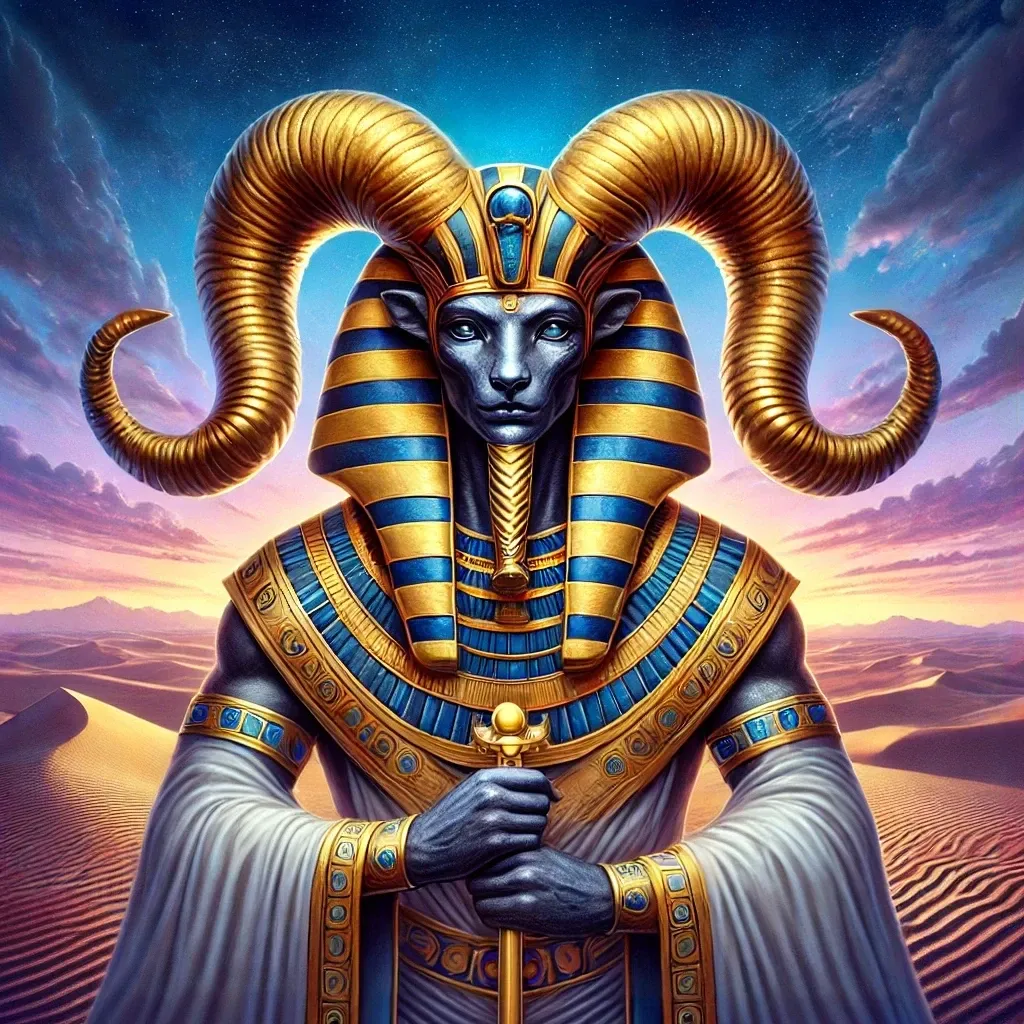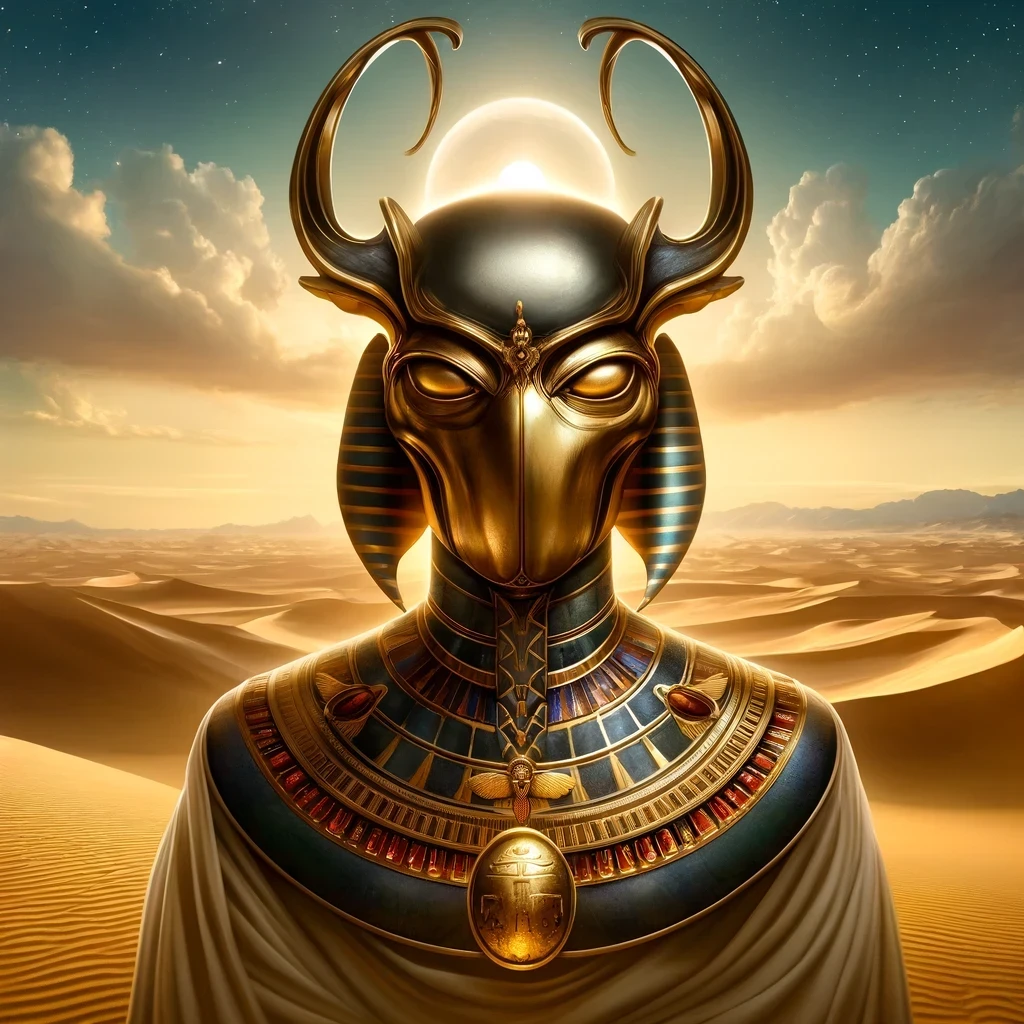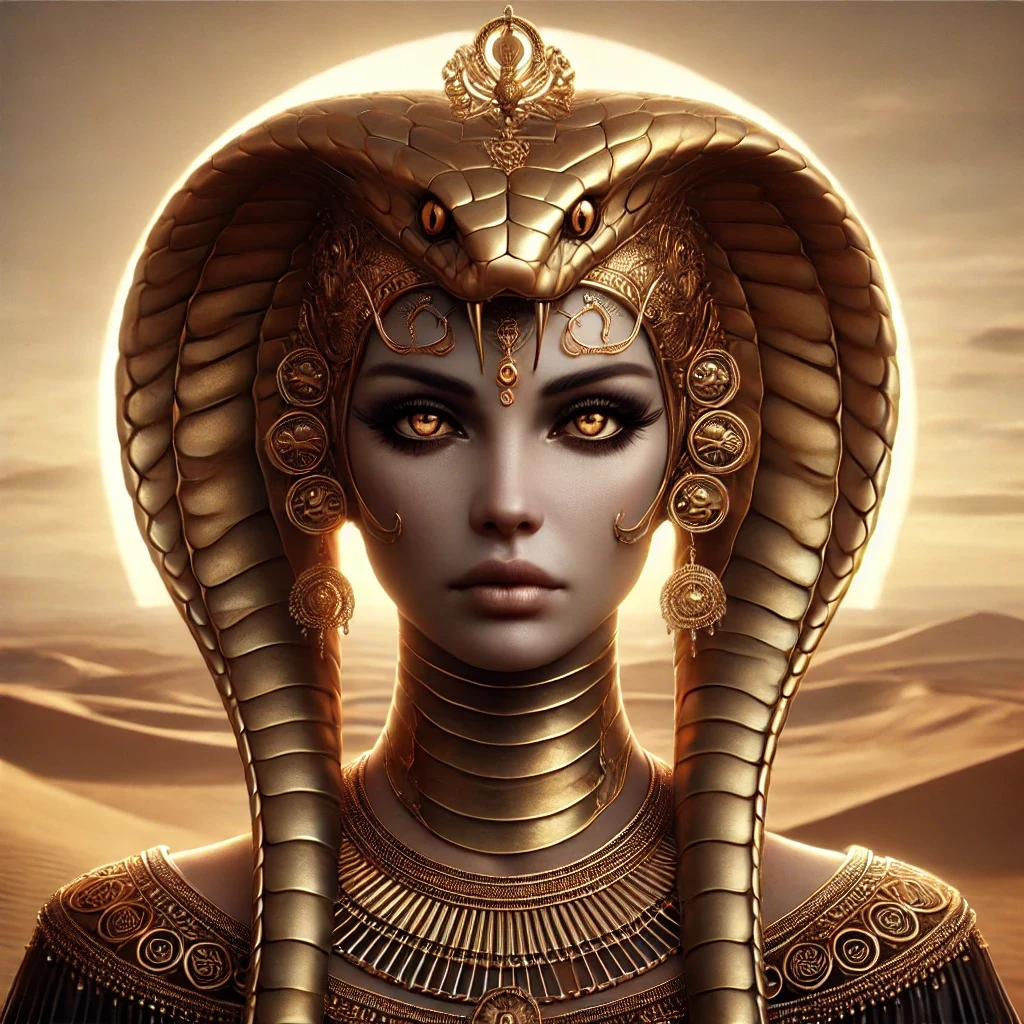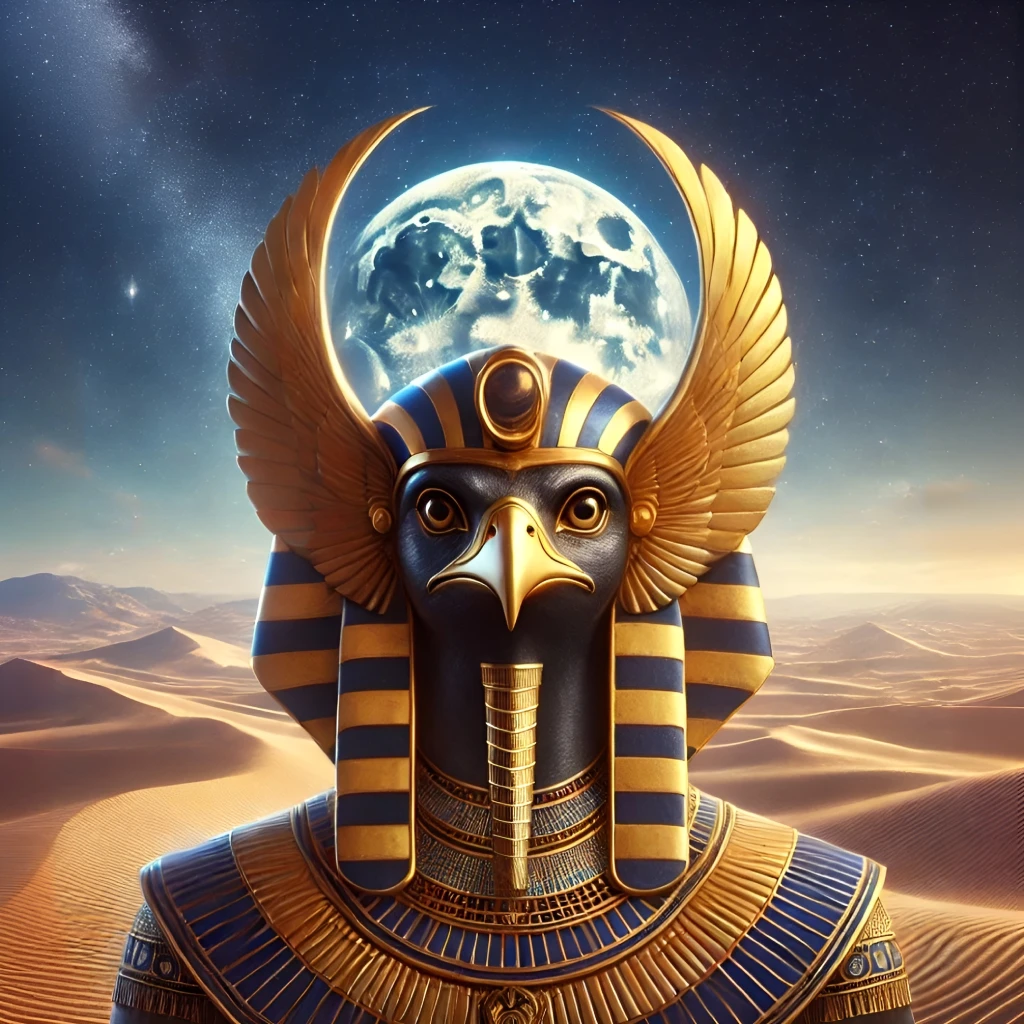Khnum, often referred to as the “Divine Potter” or “Lord of the Cataracts,” holds a unique place in Egyptian mythology. Known alternatively as Khnemu or Chnum, his name is derived from the Egyptian root meaning “to create” or “to build,” underscoring his role as a creator god. He was worshipped primarily in the regions of Elephantine and Esna, where his association with the Nile and fertility was central to his cult.
Origins
Khnum’s origins can be traced to the early dynastic periods of ancient Egypt, particularly within the context of Upper Egypt. His worship centered around Elephantine, an island on the Nile near modern-day Aswan, which served as a crucial point for the Nile’s inundation. As a god of the Nile’s life-giving waters, he was intrinsically linked to the river’s annual flooding, essential for agricultural prosperity.
Early Cult Worship
The earliest depictions of this divine figure appear in reliefs and inscriptions dating back to the Old Kingdom (2686–2181 BCE). These portrayals often associate him with creation and fertility. As the patron of potters and artisans, he also became a figure of craftsmanship and divine creativity.
Evolution Over Dynasties
During the Middle and New Kingdoms, Khnum’s role expanded. He was integrated into broader theological frameworks, becoming associated with creation myths and paired with other deities like Satis and Anuket to form a triad worshipped in the region. Over time, his influence spread beyond Elephantine, reaching other parts of Egypt.
Appearance
The god’s visual representation has remained remarkably consistent, solidifying his identity in Egyptian iconography.
Physical Depictions
Khnum is most famously depicted as a man with the head of a ram. His curved horns are emblematic, symbolizing strength and virility. In some representations, he appears seated at a potter’s wheel, fashioning human figures or gods from clay.
Variations in Artistic Depictions
In certain artistic depictions, he wears the Atef crown, emphasizing his divine authority. Occasionally, he is shown holding the ankh and was scepter, reinforcing his roles as a life-giver and protector.
Abilities
As a creator deity, Khnum possessed extraordinary abilities central to Egyptian cosmology.
The Potter of Life
His primary power was shaping life. On his potter’s wheel, he molded the bodies of humans and gods, crafting them with precision. Mythology holds that he also created children’s bodies before placing them into their mothers’ wombs.
Controller of the Nile’s Waters
The deity’s association with the Nile extended beyond its physical flow. He was believed to govern its inundation, ensuring the river provided sustenance to the land and its people.
Protection and Restoration
Khnum’s creative powers were thought to extend to restoring order and balance, particularly in times of drought or natural calamities. Rituals invoking his favor aimed to secure agricultural abundance.
Myths
Khnum’s mythological narratives showcase his role in creation and his interactions with other gods and humans.
The Creation of Humanity
One of the most well-known tales involves his crafting of humankind. Using clay from the Nile’s fertile banks, he shaped each person’s form and imbued them with life. This myth underscores his role as a sustainer of life and a god of fertility.
Involvement in Osirian Myths
While not a central figure in the Osiris mythos, Khnum occasionally appears as a supportive force, aiding in the maintenance of Ma’at (cosmic order). In some versions, he assists in the rejuvenation of Osiris, highlighting his restorative powers.
Symbolism
Khnum’s symbolic significance resonates deeply within Egyptian culture, encapsulating themes of creation, fertility, and sustenance.
The Potter’s Wheel
The potter’s wheel symbolizes divine craftsmanship and the cycle of life. It also represents the interconnectedness of humans and gods, with the deity serving as a mediator.
The Ram
The ram’s association with fertility and vitality underscores Khnum’s role in perpetuating life. His horns are also linked to protection and resilience.
Associated Objects and Elements
Khnum’s connection to the Nile is further symbolized through water imagery. Ritual offerings often included clay, representing the material of creation, and water, signifying life’s sustenance.
Relationships
This god was part of a divine triad worshipped in the Elephantine region, reflecting his integration into the pantheon.
The Triad of Elephantine
- Satis: His consort, a goddess of the Nile’s inundation, symbolized the river’s nurturing aspect.
- Anuket: Often depicted as their daughter, she represented the Nile’s downstream flow and fertility.
Interactions with Other Deities
Khnum’s relationships extended beyond this triad. He collaborated with Thoth, the god of wisdom, in crafting the physical and spiritual components of humans. Additionally, he was revered alongside Ra, contributing to creation myths tied to the sun god.
Trivia
- Duality of the Ram: In Egyptian culture, rams were both revered and feared, embodying strength and unpredictability. This duality is evident in Khnum’s protective yet powerful nature.
- Elephantine’s Nilometer: The island’s ancient nilometer, used to measure the river’s inundation, was dedicated to Khnum, reinforcing his role as the Nile’s guardian.
- Cultural Resurgence: During the Greco-Roman period, his cult saw a revival, as his attributes aligned with Hellenistic ideals of craftsmanship and creation.
- Epithets: Titles such as “Lord of the Cataracts” and “Fashioner of Mankind” highlight his dual roles as a creator and protector.
- Modern Legacy: Artifacts and temples dedicated to Khnum, such as the Temple of Esna, remain significant archaeological and tourist sites.



